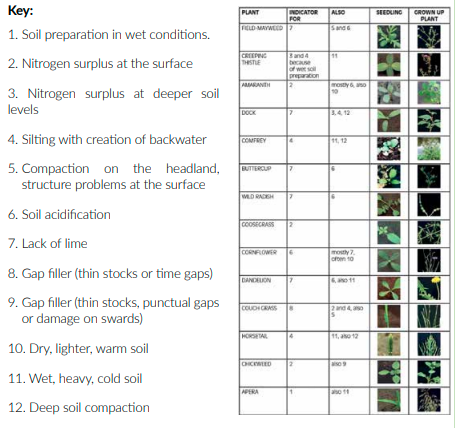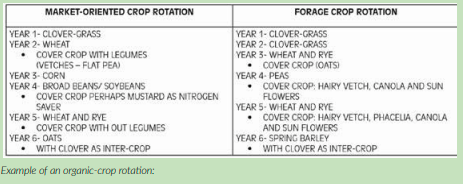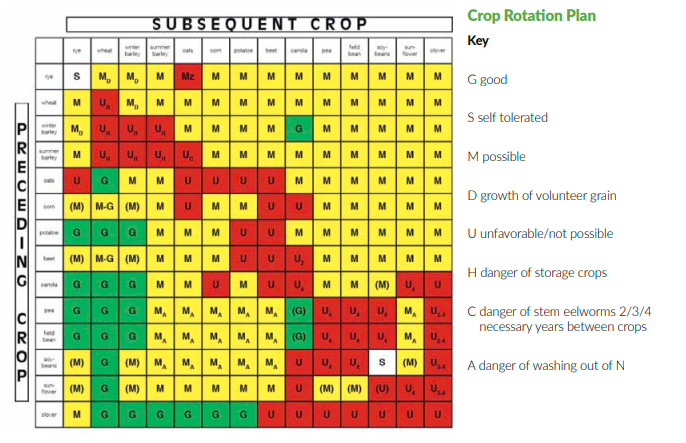PH-value, soil structure (elimination of capillary action, compression, smearing of the soil) and moisture of the soil can
be seen by the growth of different weeds. If the crops in the field show an irregular growth pattern or there is extremely wet harvest and poor soil preparation conditions resulting in silting, acidification, nutrient or oxygen deficiency this will be visible for years in plant growth. Moreover, a lack of nutrients will make weeds discoloured to the human eye. The following graph examines results for having certain weeds.

Crop Rotation
It is important to understand the correlation of crop rotations. Single crops should be selected because of their cultivation and soil advantages instead of an economical advantage. The crop rotation should be designed that the available nitrogen will be used by the selected crop. The crop rotation links should be designed like this: Nitrogen collection – Strong consumption of Nitrogen – Low Consumption of Nitrogen Slight overproduction of nitrogen is important to increase the humus content in the soil. (to increase the humus content by 1 %, 1200 kg/ha nitrogen is necessary)

Principles of good crop rotation: (Year 1)
• percentage of legumes should be between 20 – 25 %
• percentage of grain should be a maximum 50 – 60 %
• percentage of root crops should be a maximum 5 – 25 %
• Alternate between
• plants with deep roots and shallow roots
• nitrogen collecting – consuming
• winter crops – summer crops
• root crops – grain crops
• cover crops and intercrops
Goals of a balanced crop rotation:
• Preservation of soil fertility
• Maximizing nitrogen collection
• Weed control for example.: clovergrass: regulation of thistle
• prevention against disease and defence against pests
• mobilization of nutrients
• plants covering the soil throughout the year (cover crops)

